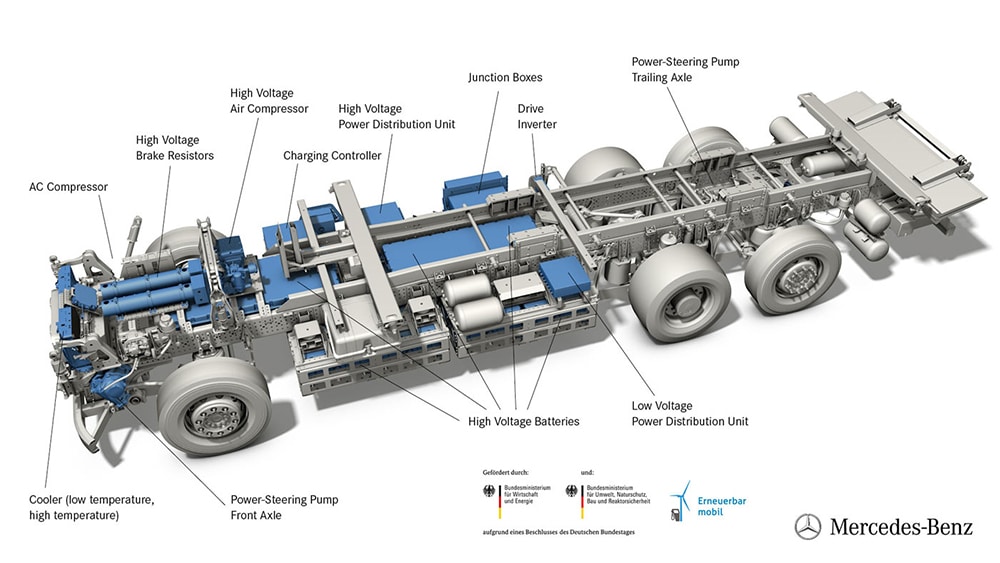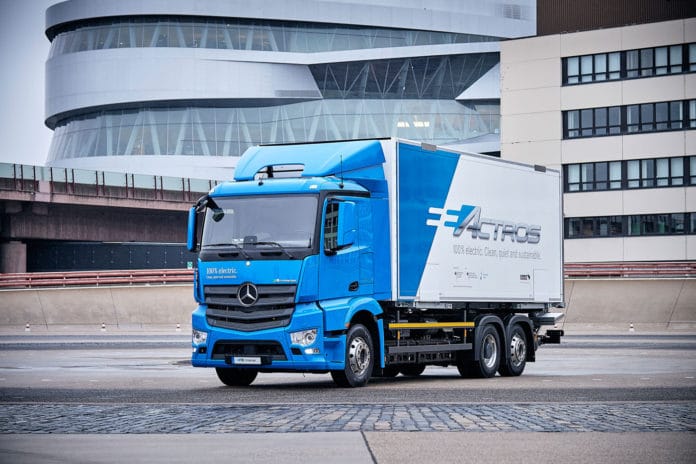Urban garbage disposal is an area that is ideally suited for electrified commercial vehicles, because of relatively short daily routes that can be planned up to 100 km. That’s why, in addition to Volvo and other providers, Daimler is now also introducing a garbage truck with the eEconic. The eEconic is based on the conventional Econic on the one hand and the electrified Mercedes-Benz eActros on the other.
The company announced that the first customer testing of the eEconic for municipal use is already planned to start in 2021. The experience gained from customer testing should then flow directly into the series production of the eEconic, which will then begin in 2022.
The zero-emission eEconic will initially be proposed in the 6×2/N NLA configuration and will mainly be used as a waste collection vehicle. According to the announcement, Daimler assumes that the electric garbage truck will be used on relatively short and well-planned routes of up to 100 kilometers with a very high stop rate. With the right driving style, you can recover energy during braking to charge the battery, further improving autonomy and efficiency.

The concern does not say how the technical characteristics of the garbage truck will differ from those of an electric truck. The Mercedes-Benz eActros, unveiled back in 2017, has two 250 kW motors and 485 Nm of torque. It also comes with two lithium-ion batteries with a total output of 240 kW, which are designed for 200 kilometers of continuous travel.
The new Mercedes eEconic represents a responsible approach to the environment, especially in urban use. Its electric drive does not produce emissions, and above all, it is silent, characteristics that have a positive effect on the quality of life of people and those who drive the vehicle.
The “DirectVision driver’s cab,” positioned at the bottom with a panoramic windscreen and a glazed passenger door, offers the driver direct and visual contact with the vulnerable road users such as cyclists and pedestrians. In addition, the driver is supported by a series of intelligent assistance and safety systems such as Sideguard Assist. The batteries will be charged not only in the parking lot but also in motion – in the recovery mode when braking.
As for the existing portfolio of electric trucks E-Mobility Group, here we note, first of all, eActros with a range of up to 200 km, which today are already undergoing practical tests on the roads of Germany and Switzerland from potential customers who received these trucks back in 2018. The United States is also undergoing road tests of EM2 Freightliner trucks, and heavy class Freightliner eCascadia also involves customers.
